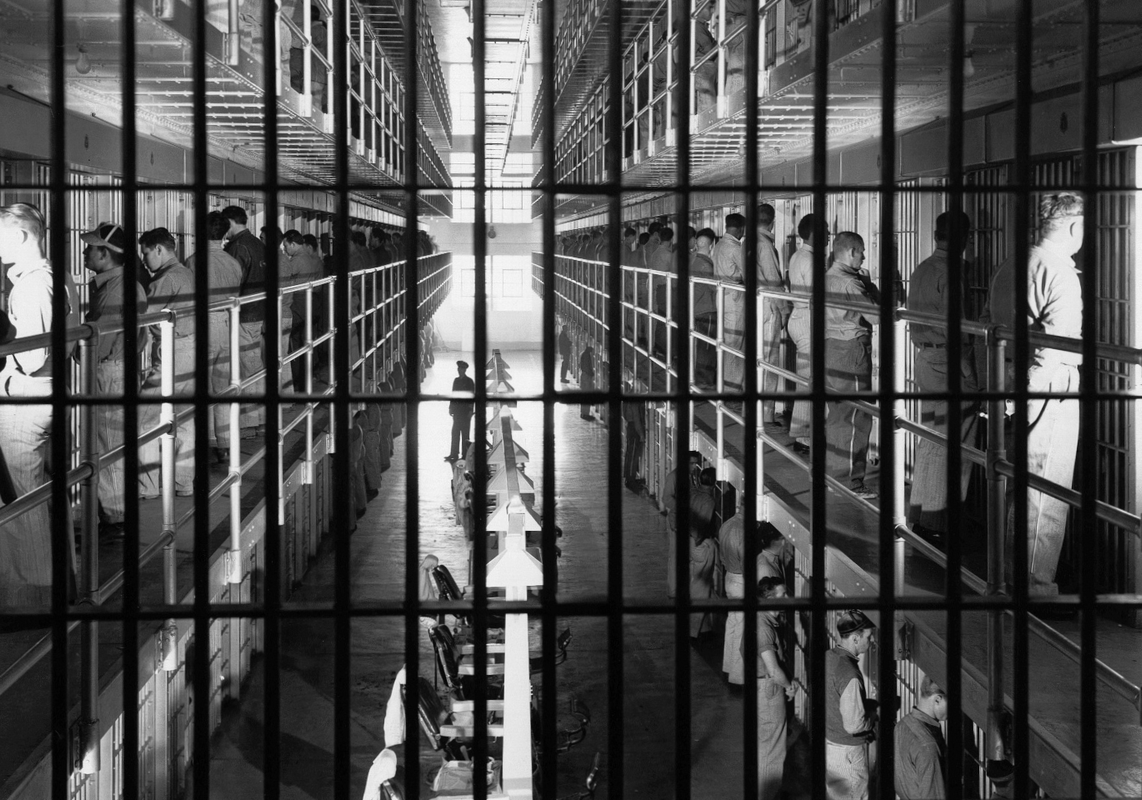“Hitching at this hour.”Nóz w wodzie [Knife in the Water] (Roman Polanski, 1962)
Sep
16
Mayflower Day

The young man (Zygmunt Malanowicz) outstretched on the boat's bow. DP: Jerzy Lipman.
thriller
“Are the birds gonna eat us, Mommy?”The Birds (Alfred Hitchcock, 1963)
Sep
10
chicken

Alfred Hitchcock and Tippi Hedren in a promotional photo by Philippe Halsman. Hedren, as her character Melanie Daniels, is attacked by a large crow while Hitchcock calmly enjoys a fried chicken and a glass of wine. DP: Robert Burks.
Feeling rather peckish.
“Just you wait, it won't be long,
The man in black will soon be here,
With his cleaver's blade so true,
He'll make mincemeat out of you!”M [M – Eine Stadt sucht einen Mörder] (Fritz Lang, 1931)
Sep
5
Jury Rights Day

Schränker (Gustaf Gründgens) and his kangaroo court. Under his clenched fist a photograph of one of the murdered girls. DP: Fritz Arno Wagner.
– children singing
“And now for the benefit of the folks who tuned in late, I should like to say that this is the most traumatic spectacle I have ever had the GOOD fortune to witness.”Dial 1119 [The Violent Hour] (Gerald Mayer, 1950)
Aug
28
Sherry Flips

Dr. John Faron (Sam Levene) and barfly Freddy (Virginia Field) drinking at the counter. Freddy is enjoying her sherry flip with what appear to be olives instead of cherries. Two more glasses are waiting for her. DP: Paul Vogel.
– TV announcer
Maléfices [Where the Truth Lies] (Henri Decoin, 1962)
Aug
16
milk

Ronga (Maîthé Mansoura accompanied by cheetah Nyète), sits on a straw-covered floor while holding a bowl with milk. There are potted plants and gardening equipment is placed against the wall. DP: Marcel Grignon.
L'œil du malin [The Eye of Evil / The Third Lover] (Claude Chabrol, 1962)
Aug
8

A table covered with a neatly ironed table cloth and on it, several stacks of flat and soup plates, plus silverware and nesting aluminium pans. DP: Jean Rabier.
“Nice guys.” Canon City (Crane Wilbur, 1948)
Aug
1
Colorado Day

Counting the inmates. DP: John Alton.
They've been planning this for months, Canon City's Colorado Territorial Correctional Facility's toughest inmates. It's going to happen on December 30, and all men are ready to go.
Fascinating about Canon City is the usage of some of the actual locations, ánd people, involved in the 1947 #prison break.
Also striking, unfortunately, is the unevenness of the affair. John Alton's cinematography, while wonderful, wanders between noir and stuck camera shutter. And that voice-over… well, lets not mention that at all.
Canon City (Crane Wilbur, 1948)
Jul
31
grub

A close-up of two prisoners' hands. One is handling grub with a spoon from a stainless steel soup bowl. DP: John Alton.
– He's got a calendar in there.
– What day is it?
– It's a broad in a cowboy hat.
– Scooby doo bi doo ba ba.Private Property (Leslie Stevens, 1959/1960)
Jul
21

Duke (Corey Allen) and Boots (Warren Oates) “watching TV”. Ann Carlyle (Kate Manx) stripping for her husband is on. DP: Ted D. McCord.
Date watched, not the date in the movie. The quote was too good to leave it off this blog.
“You know how much coffee I've had today? 17 cups. The Brazilians ought to give me a medal.”The Sniper (Edward Dmytryk, 1952)
Jul
21
chow mein

Dr. James G. Kent (Richard Kiley) discussing the case during lunch at a Chinese restaurant. After scratching his temple with his chopsticks, he attempts to eat his noodles with the utensils' grip. DP: Burnett Guffey.
– ER doctor